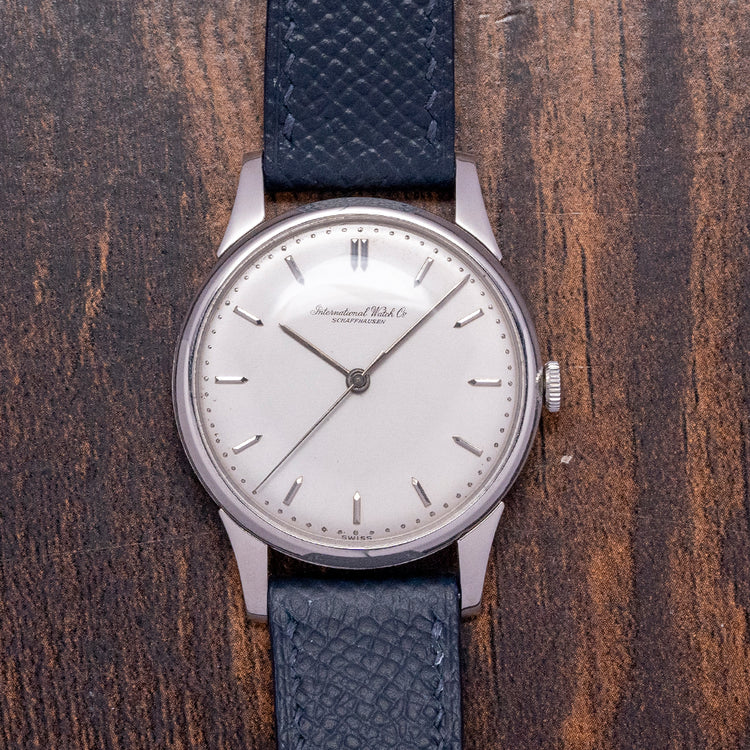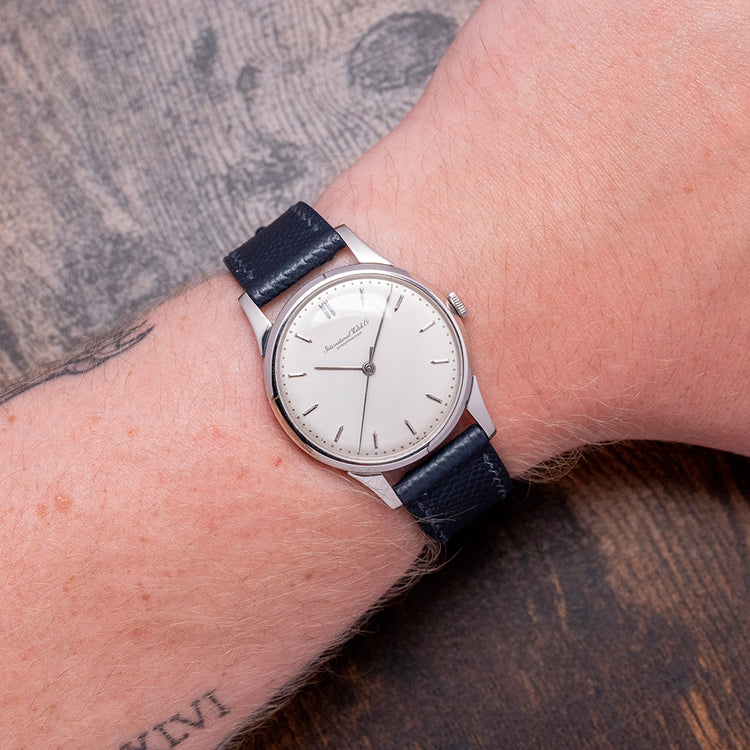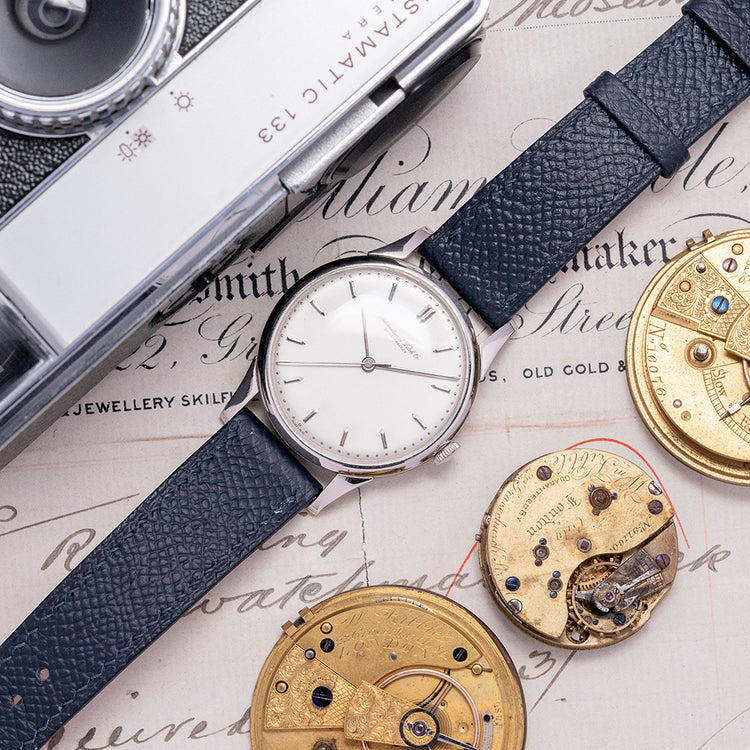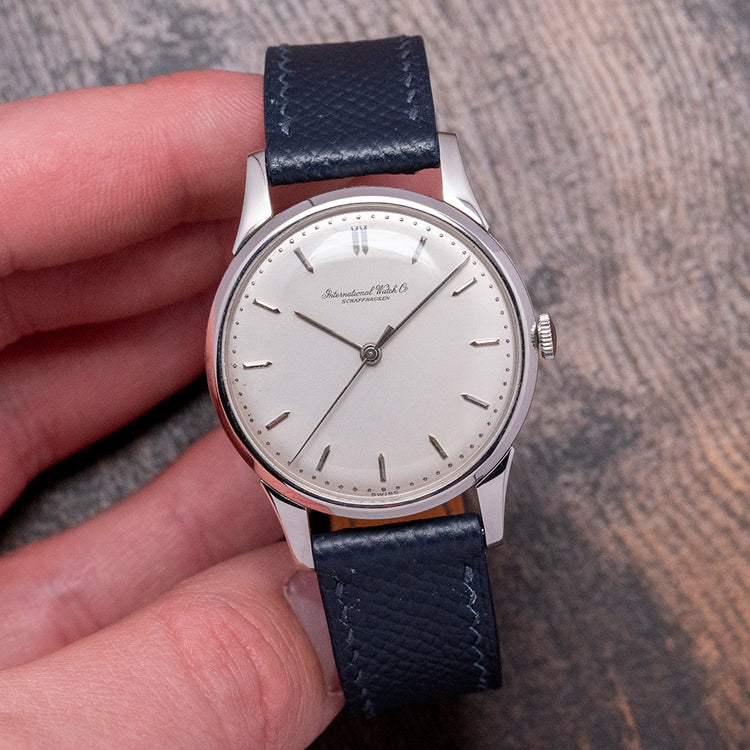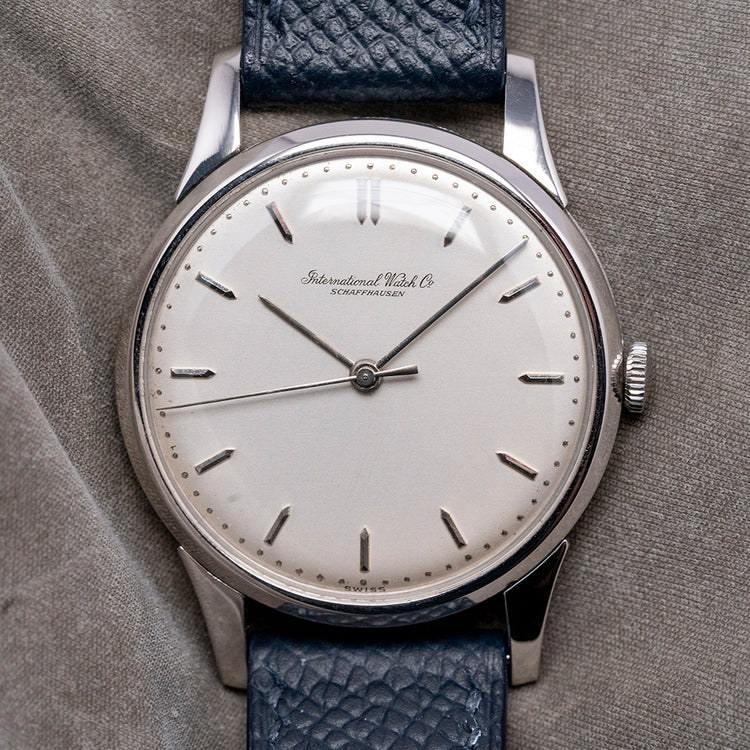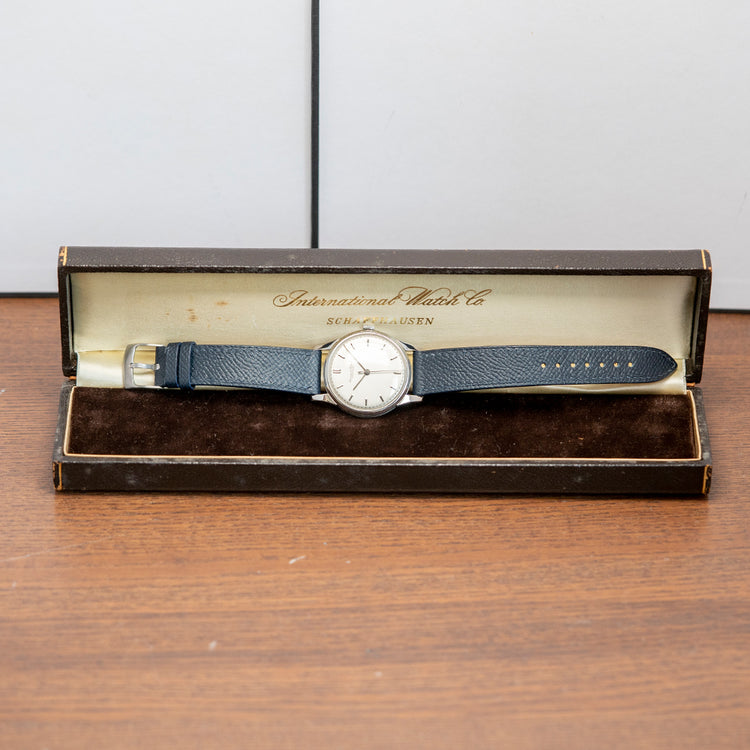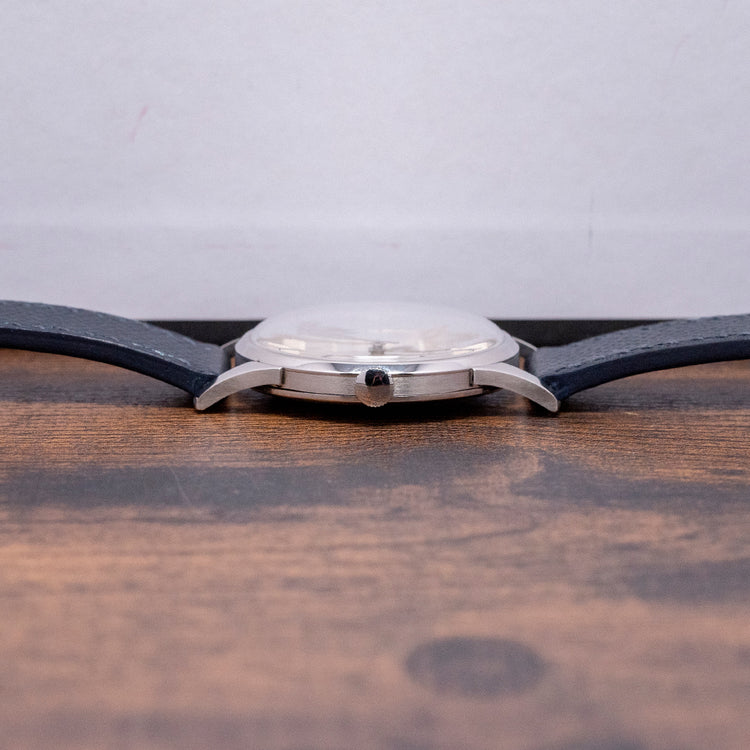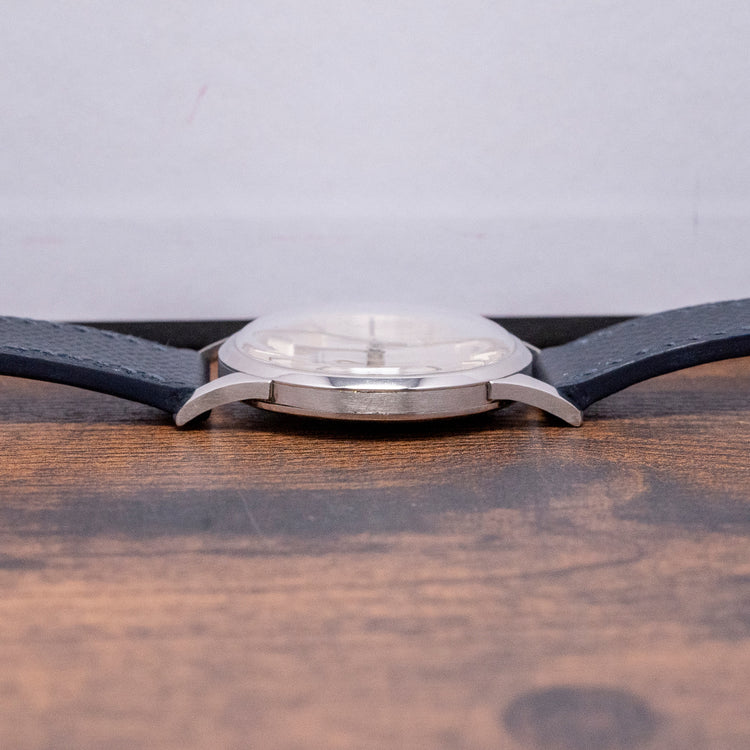More Information
Description
More
Less
Here, we have a rare classic 1950s IWC Cal89 Platinum Japanese Market 'Calatrava'. The 34.5mm brushed and polished Platinum case gently curves over your wrist with finely tapered lugs. In the 1950s, ISOMURA Co. secured permission from IWC Schaffhausen to produce platinum cases for IWC watches, as a way to bypass high import costs, including a 30% duty and a 13% tax on precious metals. Other luxury brands like Rolex and Gruen soon followed suit. The Japanese market cases were notably inscribed with “PT900, Japanese flag PM900,” marking their quality and origin. Its curvaceous flanks lead to a lug-to-lug length of 44mm and a case thickness of just 8.5mm, ensuring a comfortable fit on your wrist. On the right side is a coin-edge crown. A smooth bezel holds a domed crystal above a crisp white dial in a configuration very much like the "Patek Calatrava" dials of the same time period. An outer minute track surrounds applied bullet-shaped indexes marking the hours; elegant stick hands are complemented by a tapered second hand. At 12 o’clock, we have the original IWC motif in an attractive swirling font. On the reverse, a solid brushed and polished case back, inside is a manually wound IWC Cal. 89, 16 jewels, beating at a leisurely 18,000 beats per hour. This Albert Pellaton-designed movement was introduced in 1946 and remained in production until 1979. The watch comes paired with a well-suited quick-release 18mm leather strap and pin buckle. It comes with its original IWC presentation box.
Points of Mention
More
Less
Personal Note
More
Less
Specification
More
Less
Movement : Manually Wound IWC Cal. 89
Age : Circa. 1950s
Year : Circa. 1950s
Case Size : 34.5mm
Case Thickness : 8.5mm
Lug to Lug : 44mm
Lugs : 18mm
Condition : Pre-Owned
Box and Papers : Box
Case Material : Platinum PT900
Warranty : 12 Months NON-Waterproof Warranty
The wrist model's wrist size is 7inch
About IWC
More
Less
Description
Here, we have a rare classic 1950s IWC Cal89 Platinum Japanese Market 'Calatrava'. The 34.5mm brushed and polished Platinum case gently curves over your wrist with finely tapered lugs. In the 1950s, ISOMURA Co. secured permission from IWC Schaffhausen to produce platinum cases for IWC watches, as a way to bypass high import costs, including a 30% duty and a 13% tax on precious metals. Other luxury brands like Rolex and Gruen soon followed suit. The Japanese market cases were notably inscribed with “PT900, Japanese flag PM900,” marking their quality and origin. Its curvaceous flanks lead to a lug-to-lug length of 44mm and a case thickness of just 8.5mm, ensuring a comfortable fit on your wrist. On the right side is a coin-edge crown. A smooth bezel holds a domed crystal above a crisp white dial in a configuration very much like the "Patek Calatrava" dials of the same time period. An outer minute track surrounds applied bullet-shaped indexes marking the hours; elegant stick hands are complemented by a tapered second hand. At 12 o’clock, we have the original IWC motif in an attractive swirling font. On the reverse, a solid brushed and polished case back, inside is a manually wound IWC Cal. 89, 16 jewels, beating at a leisurely 18,000 beats per hour. This Albert Pellaton-designed movement was introduced in 1946 and remained in production until 1979. The watch comes paired with a well-suited quick-release 18mm leather strap and pin buckle. It comes with its original IWC presentation box.
Points of Mention
Personal Note
Specification
The Brand
Enquire or Book an Appointment
Would you like to discover further details about this watch, or perhaps arrange an appointment to view and try it on? Complete this form and a member of our team will get back to you shortly.
You May Also Like


























